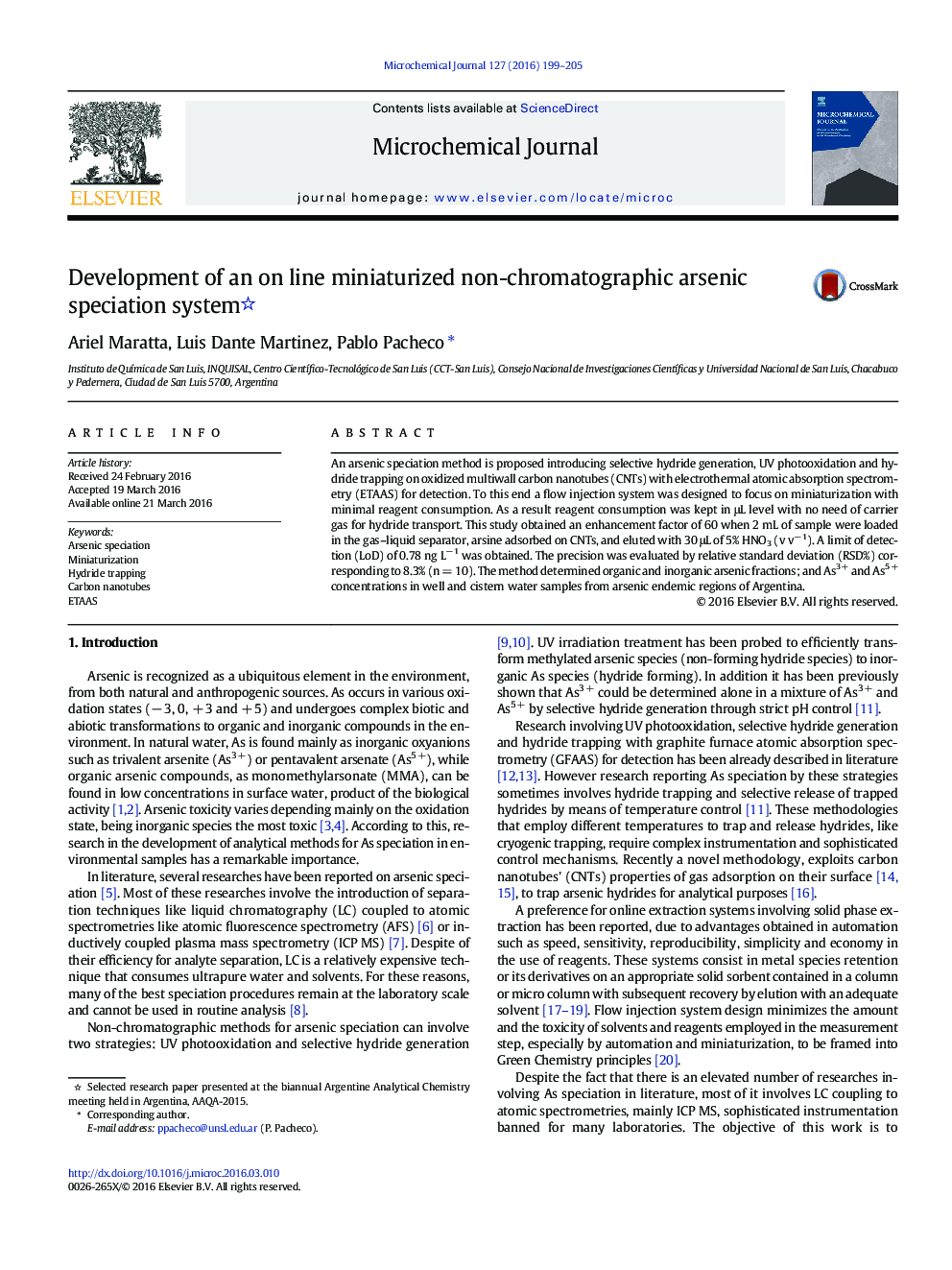| Article ID | Journal | Published Year | Pages | File Type |
|---|---|---|---|---|
| 1227519 | Microchemical Journal | 2016 | 7 Pages |
•A novel FI-UV-HG-ETAAS system has been designed for arsenic speciation.•A miniaturized FI system for As speciation is proposed.•FI system design allowed minimal reagent consumption.•Simple hydride trapping method did not require carrier gas.•Method was applied to water from As endemic regions of Argentina.
An arsenic speciation method is proposed introducing selective hydride generation, UV photooxidation and hydride trapping on oxidized multiwall carbon nanotubes (CNTs) with electrothermal atomic absorption spectrometry (ETAAS) for detection. To this end a flow injection system was designed to focus on miniaturization with minimal reagent consumption. As a result reagent consumption was kept in μL level with no need of carrier gas for hydride transport. This study obtained an enhancement factor of 60 when 2 mL of sample were loaded in the gas–liquid separator, arsine adsorbed on CNTs, and eluted with 30 μL of 5% HNO3 (v v− 1). A limit of detection (LoD) of 0.78 ng L− 1 was obtained. The precision was evaluated by relative standard deviation (RSD%) corresponding to 8.3% (n = 10). The method determined organic and inorganic arsenic fractions; and As3 + and As5 + concentrations in well and cistern water samples from arsenic endemic regions of Argentina.
